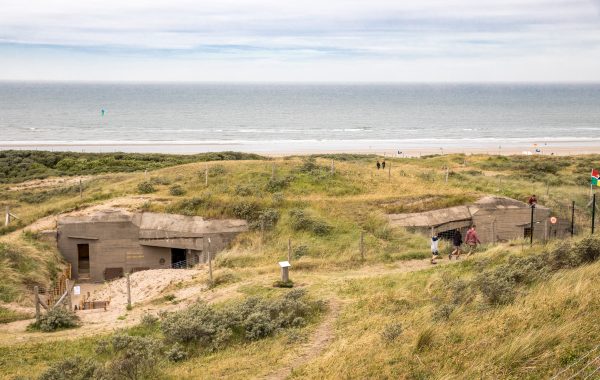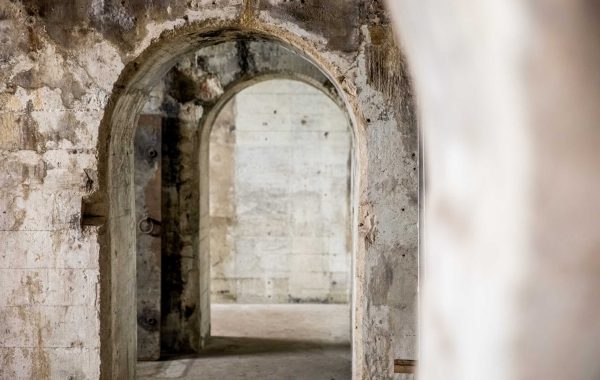About Us
About Bunker Day
Many traces of the Second World War can still be found along the Dutch coast. The many bunkers, built as part of the coastal defence and fortification, the Atlantic Wall, are perhaps the most notable. These fascinating concrete giants are normally closed to the public but once a year various bunkers from Zeeland up to the Frisian Islands will be open to visit during Bunker Day. The idea behind the event is that as many bunkers as possible are opened to the public for one day a year. Visitors not only have the opportunity to become more acquainted with this unique part of European heritage but also get to experience how the Atlantic Wall's construction has affected inhabitants and how radically this line of defence has changed the face of our coastline.
The European Atlantic Wall Heritage Foundation
The European Atlantic Wall Heritage Foundation (Stichting Europees Erfgoed Atlantikwall) was founded in 2014 with two main goals: to raise awareness for the Atlantic Wall as a heritage entity amongst a wide audience and to further develop the cultural-historical experience it offers. These goals are being realised by the organisation of various projects with a focus on recreation and tourism. Bunker Day is the best-known example of these.
Atlantic wall
The Atlantic Wall is the line of defense that the Germans built along the coast of Western Europe during World War II to prevent an allied invasion. It runs from the North Cape in Norway all the way to the border of Spain, and has a total length of 6,200 kilometers. That includes the coastline of the English Channel Islands that Hitler conquered in 1940.
Germany started as early as 1940 building fortifications along the western European coast. The term ‘Atlantic Wall’ or ‘Neue Westwall’ as the line was first known, was not yet being used. The battlements were primarily built for the defence of the most important harbour entrances; in The Netherlands IJmuiden, Rotterdam and Vlissingen. It occurred to the German forces at that time that the coastal defences could also potentially play an important role in an invasion of England by providing cover for the invading fleet but an invasion was never realised as Germany was defeated in the airborne offensives above England.
The German Army installed open artilleries between the existing fortifications from 1941 onwards and the concept of an uninterrupted line of defence was born.
The hindrance of the German attack on the Soviet Union at Moscow at the end of 1941 made Hitler realise that he may be hemmed in on both sides; on one side a possible English invasion and to the east a Russian counterattack. He did not have enough troops or resources to fight both.
Because of this, Hitler decided, on December 14th 1941, to build the ‘Neue Westwall’. His intent was to expand the existing defences to complete an uninterrupted line running from the Arctic Ocean to the Gulf of Biscay. Hitler thought that physically ‘closing’ the coast in this manner would free up the necessary troops for a further offensive on the Russian front.
Building the wall was not progressing fast enough and Hitler was concerned that the open artilleries were too vulnerable for airstrikes. He chose therefore to build bunkers around them with reinforced concrete walls of at least 2 metres thick. This was called ‘Ständiger Ausbau (St)’. Then, on August 25th 1942, General-Field Marshal Gerd Von Rundstedt, commander of all German troops on the western front at the time, ordered the West-European coast be transformed into an impregnable fortification. This, order number 14, was the birth of the Atlantic Wall.
Some 15,000 heavy bunkers along the Dutch, Belgian and French coast should have been built by May 1st 1943, but due to insufficient manpower, materials and fuel only 6,000 were completed. Of this number 510 were completed in The Netherlands, instead of the 2,000 that were planned.
In 1943, Hitler appointed Field Marshal Erwin Rommel as inspector of the Atlantic Wall. His strategy was to destroy attackers at sea and only to give battle on the beaches if driven to it as a last resort. In accordance with this, Rommel began in early 1944 with the installation of numerous hindrances along the water’s edge, including masses of large poles buried so they stuck out of the sand at an angle connected with steel wire and combined with landmines, later called ‘Rommel-asparagus’. Furthermore, he fortified the defences on the land-facing side by flooding low-lying areas and installing minefields, levees and trenches, anti-tank ditches and other obstructions. The compilation of the Atlantic Wall continued right up until the end of the war, even though it had become clear much earlier that there was no longer any reason to do so.
The Atlantic Wall measures 6,200 kilometres in length (including the coastline of the British Channel Islands which Hitler captured in 1940).
In the end, the full 2,000 fortifications were realised, along with tens of thousands of lighter bunkers and brickwork buildings. Moreover, likely vulnerabilities for enemy aviation landings and tank offensives on the land-facing side of the coast were further fortified with more anti-tank ditches, anti-tank walls and other obstacles.
The construction of the Atlantic Wall has had a profound effect on inhabitants in the coastal area of The Netherlands. Large sections of this region were declared no-go zones and 300,000 people were forced to evacuate. In The Hague alone 150,000 had to leave their homes and seek shelter elsewhere, often far from their hometown or province. Many did not return to their original domicile after the war. Early 1944 the Germans start flooding large portions of Zeeland, which lead to the evacuation of around 60,000 inhabitants of Zeeland. Almost 10,000 buildings were demolished so ground troops would have a clear line of fire. The resulting rubble was also used to create additional defences such as anti-tank ditches.








